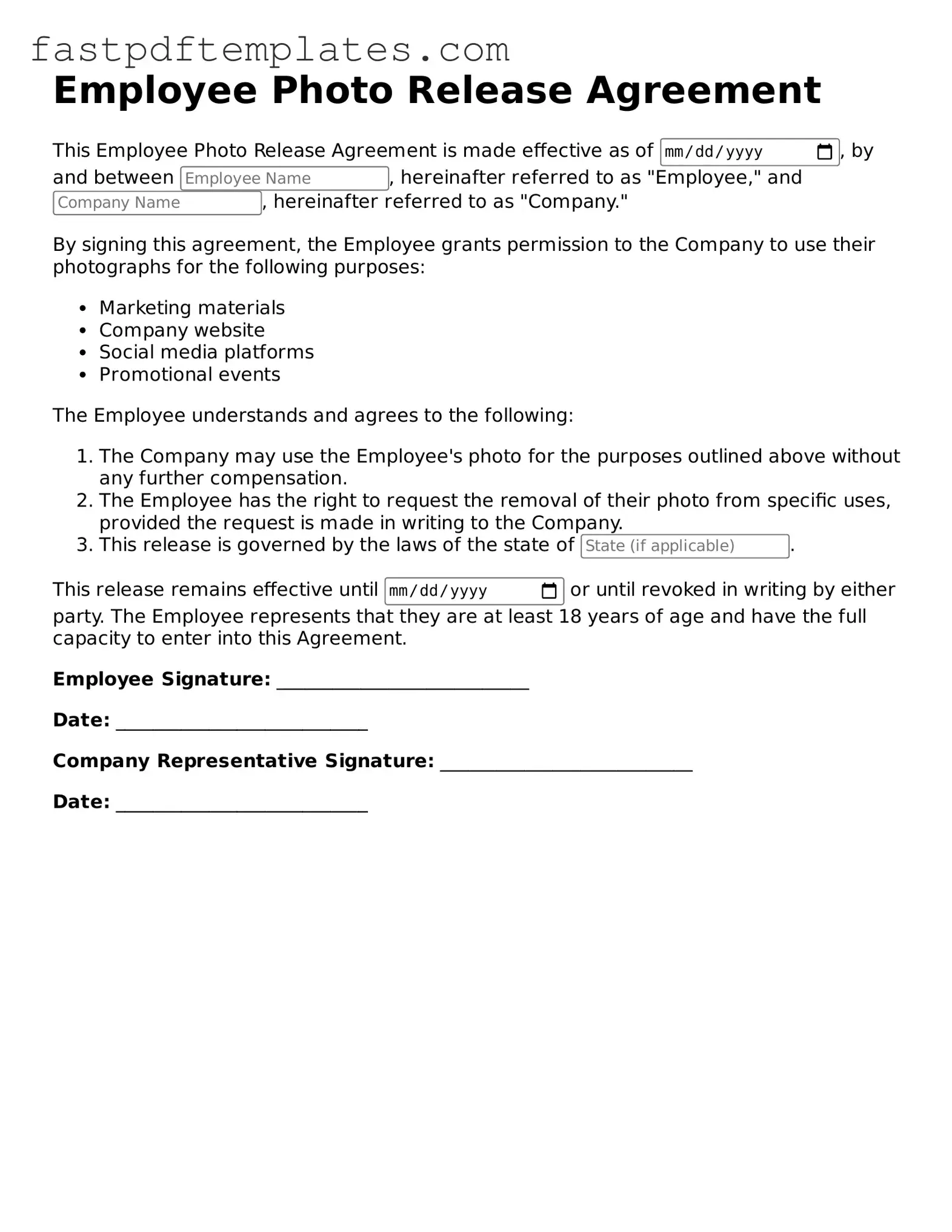Fillable Employee Photo Release Document
An Employee Photo Release form is a legal document that grants permission for an employer to use an employee's image in various media, such as promotional materials or company websites. This form ensures that the employee understands how their likeness may be used and protects the employer from potential legal issues. Understanding this form is essential for both parties to maintain clear communication and respect individual rights.
Access Document
